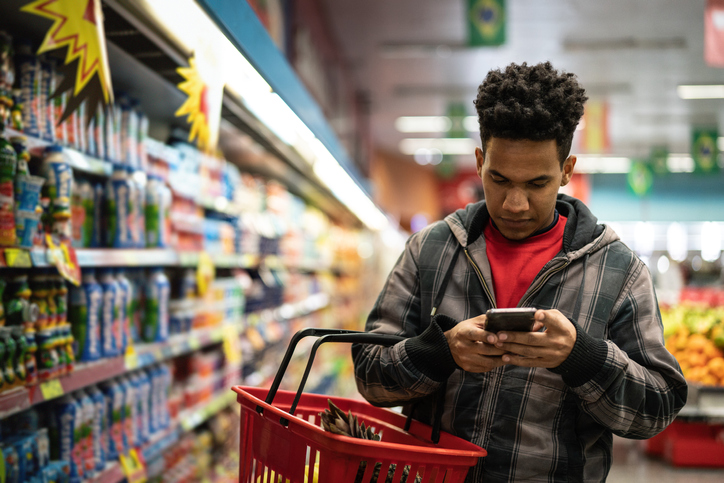Tech Vision is Localogy’s series that spotlights emerging tech. Running semi-weekly, it reports on new technologies that Localogy analysts track, including strategic implications for local commerce. See the full series here.
As the world gradually recovers, the “next normal” will be a hybrid of old and new realities. Some of this will be driven by accelerated digital transformation — a central theme of Localogy 20/20. The thought is that survival-pressured tech adoption will launch business evolution forward several years in a short time frame.
This is already playing out in retail. Global lockdowns have forced the sector to scramble and integrate new fulfillment models such as eCommerce, curbside pickup, and order-ahead (depending on the business). Those that already had momentum in these areas (Walmart, Target), are seeing big results.
But what about the Post-Covid “hybrid” world. We’ll all be shopping in physical stores, but it won’t likely look the same as it used to. For one, there won’t be as much merchandise handling — a more “touchless” environment, as we recently examined. The question is what technologies will support this?
Augmented Shopping
One potential candidate is augmented reality. Due to safety protocols around handling merchandise, AR could come to the rescue in powering touchless shopping. In other words, the technology’s inherent ability to contextualize real-world objects with graphical overlays will be naturally aligned.
This will involve a cousin of AR which is a computer-vision-powered visual search. Demonstrated so far by tools like Google Lens, it contextualizes items you point your phone at. That can include metadata such as product specs, reviews, promotional offers and other useful shopping info.
It could even be simpler than Google’s advanced object recognition technology. Employing a more rudimentary form of “marker-based AR,” codes on product packaging could activate pre-authored animations (think: product demos, celebrity endorsements), or text-based contextual info, as noted.
Beyond the fact that these integrations are logical through a Covid-era lens, consumer data further validate the need for touchless tech in general. In a recent SYKES’ survey of 3,000 adults, 11 percent report using touchless payments like PayPal, Apple Pay or Venmo for the first time in the last five months.
37 percent of respondents to the same survey ordered groceries online — including mobile — for the first time. 12 percent signed up for meal-kit services since March; And 10 percent (17 percent in the 18-24 age bracket) have subscribed to virtual fitness classes such as Yoga, spinning or others like that.
More importantly, the survey indicates sustained adoption of touchless tech and transactions. 44 percent of respondents aged 25 to 34 report that they’ll purchase more items digitally than they did pre-pandemic. And 12 percent will only use contactless payments going forward.
Proving Ground
One thing that jumps out from the touchless technologies outlined above is that they aren’t new. They’re existing technologies that were at various stages of their product lifecycles. But in the Covid era, they’re aligned with new-normal demand signals and, as a result, are inflecting.
That brings us back to AR. It likewise isn’t a new technology. It had an existing growth curve and pace of traction underway. That has now accelerated in several AR subsectors such as commerce, communications, enterprise collaboration, and new/native formats that will be born into this era.
Touchless in-aisle shopping through AR could be one of those new formats. This could initially branch from work already done by Pinterest and Google in visual search. Though you’ll still want to try on clothes and other items, digital overlays on products can at least minimize physical handling.
Panning back, all the technologies above have a role in supporting the new normal, which could transition into the next normal. That’s good news for these technologies and their proponents, as their elevated traction may be longer-lived or semi-permanent. Until then, the current period is their proving ground.



